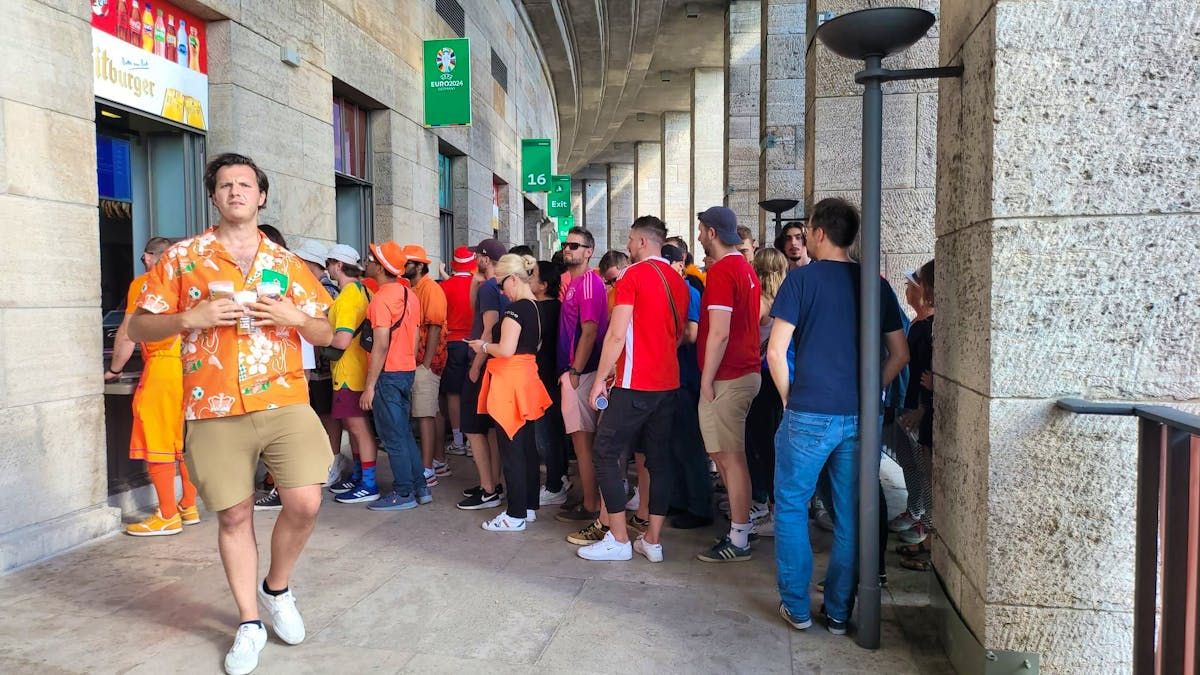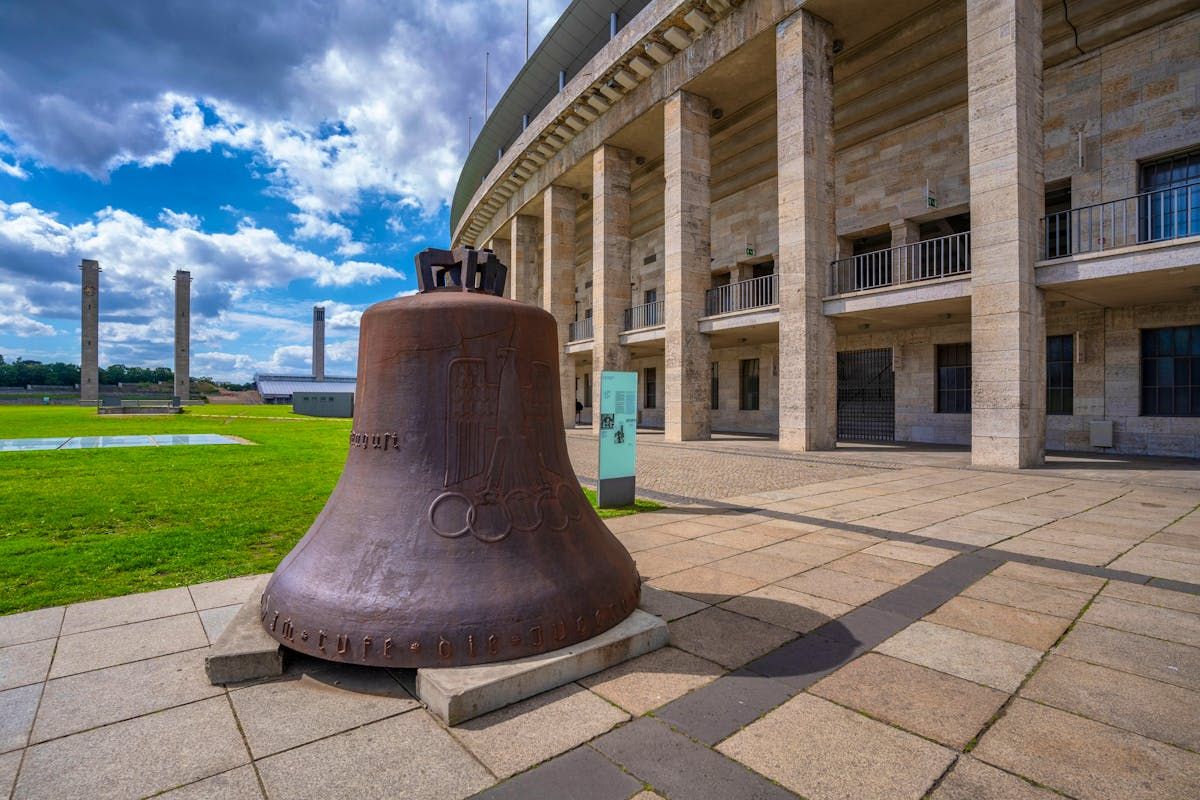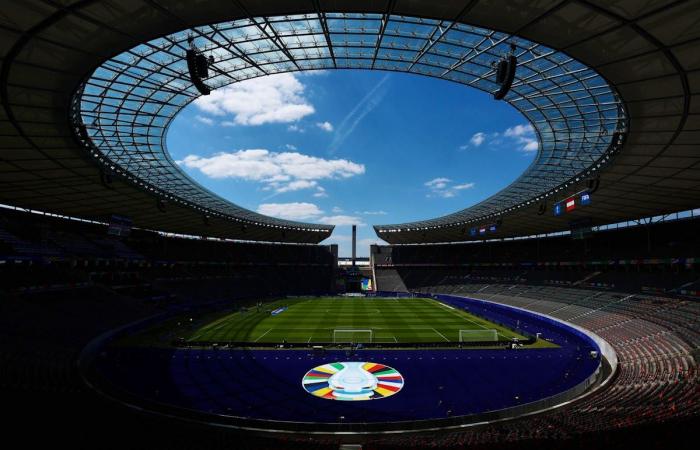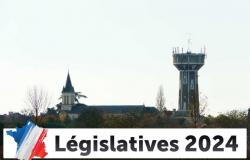A Stadium which has managed to keep an “old-fashioned” character.
IMAGO/Shutterstock
The last time the Italian team set foot on the pitch in this setting, history was written. The Azzurri had won the World Cup on penalties against France, Zinédine Zidane had scored with a Panenka, Marco Materazzi had responded with a header, Marco Materazzi had insulted Zinédine Zidane’s family and the latter had also responded to him of the head. But not in the nets: directly in the chest. History then, but this World Cup final is almost only a detail compared to everything that these walls have seen happen in 88 years of existence.
At the very beginning, there is the Deutsches Stadion, also known in the press of the time as the Grunewald-Stadion. An enclosure with some 30,000 seats built to host the 1916 Summer Olympics, which never took place. Blame it on the First World War. Germany was then designated again in 1931 to host the 1936 Games, an opportunity for the Nazis, who came to power in 1933, to make it a huge propaganda event.
To do this, forty-two million marks of the time were put into the brand new Olympic Stadium. It could accommodate between 86,000 and 110,000 people depending on the configuration – today, with UEFA rules, it is a little less than 70,000. Since then, the World Cups of 1974 – the Dutch total football World Cup – and 2006 – the head-to-chest World Cup we saw above – have been held there, Hertha Berlin plays there, the German Cup finals are contested there and athletics comes there for a Diamond League meeting.
You can easily add to this rather crazy list the concerts of the greatest. Michael Jackson, Rammstein regularly, Madonna, Depeche Mode, U2, AC/DC… Almost all of them came to shake the old walls of the Olympic Stadium. It must be said that the location is very practical, in the middle of a wood after the Westend district and served for meetings by lines 3, 5 and 9 of the S-Bahn from the Central Station, but also line 2 of the U -Bahn.
The tips inside

The Olympic Stadium is not brand new. It was certainly renovated for the last time twenty years ago, but the enclosure is not up to modern standards, necessarily. Don’t hesitate to come early, because the entrances are a bit slow (unlike public transport which is busy). And in the surroundings of the stadium, there is everything you need. Remember to take something to drink and/or eat around and not wait to be in the corridors. The lines are very long and it doesn’t go quickly.
Going there for the first time is a slap in the face. The main streets around it set the tone and any former student will see pages of history books flash through their head when they pass the entrance controls. Because Adolf Hitler had made the 1936 Summer Olympics into a propaganda monster. The Führer had set up the Olympics which took place in an infamous atmosphere, made of xenophobia and anti-Semitism, in order to promote the ideology of the superiority of the “Aryan race”.
Crazy: Tuesday I was sitting two meters from here!
imago/ZUMA Press/Keystone
Around fifty nations and around 4,000 athletes took part in these games, less than a tenth of them women (and 174 Swiss). It was of course Germany which, in the end, won the most medals (89 including 33 gold, ahead of the USA 56/24), to the great pleasure of Hitler. Fortunately, despite numerous threats of boycott, the United States ended up making the trip. Because the hero of the Games was the black American sprinter Jesse Owens, four gold medals under his belt.
Legend has it that Hitler, furious at seeing his tall blonds being beaten by a little guy from Tucson, then refused to greet her. But it’s wrong. “After passing the chancellor, he appeared waving at me, I greeted him in return,” said the American in his autobiography. I think that authors showed bad taste by criticizing the man of the hour in Germany.”

Today, there are still a few eagles hanging around the enclosure. Above all, there is the bell, the one that rang in a 77-meter tower at the time, but fell in a fire at the end of the Second World War. It will be rebuilt in the 1960s. The bell was buried to prevent someone from stealing it in 1947. It ended up being “saved” nine years later, thanks to a metal detector.
Today it sits next to the stadium shortly after entrance B and the wandering spectators do not fail to immortalize the swastika still visible on its side as they pass. A way like any other not to forget what had happened.









